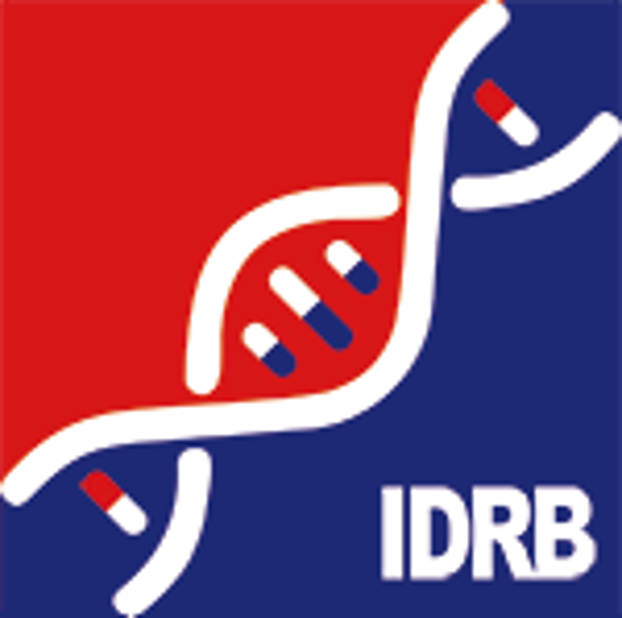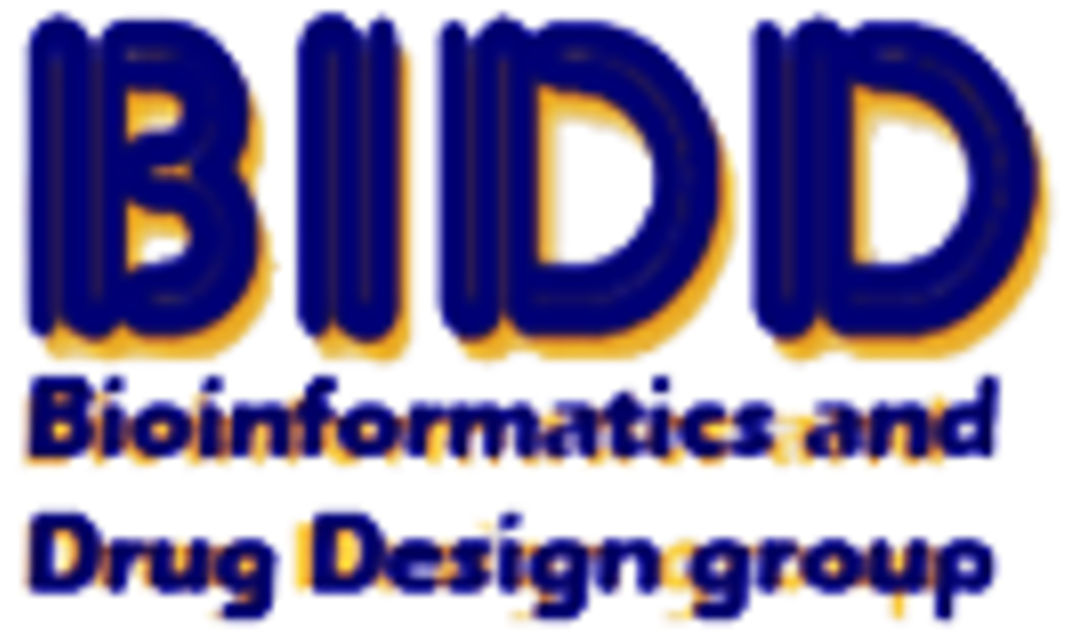Target Information
| Target General Infomation | |||||
|---|---|---|---|---|---|
| Target ID |
T95594
|
||||
| Former ID |
TTDR01390
|
||||
| Target Name |
mRNA of PI3K p110 beta
|
||||
| Gene Name |
PIK3CB
|
||||
| Synonyms |
PI3Kbeta (mRNA); PI3kinase subunit beta (mRNA); PIK3CB (mRNA); Phosphatidylinositol 4,5bisphosphate 3kinase 110 kDa catalytic subunit beta (mRNA); Phosphatidylinositol 4,5bisphosphate 3kinase catalytic subunit beta isoform (mRNA); PtdIns3kinase subunit beta (mRNA); PtdIns3kinase subunit p110beta (mRNA); p110beta (mRNA); PIK3CB
|
||||
| Target Type |
Research
|
||||
| Function |
Phosphoinositide-3-kinase (PI3K) that phosphorylates PtdIns (Phosphatidylinositol), PtdIns4P (Phosphatidylinositol 4- phosphate) and PtdIns(4,5)P2 (Phosphatidylinositol 4,5- bisphosphate) to generate phosphatidylinositol 3,4,5-trisphosphate (PIP3). PIP3 plays a key role by recruiting PH domain-containing proteins to the membrane, including AKT1 and PDPK1, activating signaling cascades involved in cell growth, survival, proliferation, motilityand morphology. Involved in the activation of AKT1 upon stimulation by G-protein coupled receptors (GPCRs) ligands such as CXCL12, sphingosine 1-phosphate, and lysophosphatidic acid. May also act downstream receptor tyrosine kinases. Required in different signaling pathways for stable platelet adhesion and aggregation. Plays a role in platelet activation signaling triggered by GPCRs, alpha-IIb/beta-3 integrins (ITGA2B/ ITGB3) and ITAM (immunoreceptor tyrosine-based activation motif)-bearing receptors such as GP6. Regulates the strength of adhesion of ITGA2B/ ITGB3 activated receptors necessary for the cellular transmission of contractile forces. Required for platelet aggregation induced by F2 (thrombin) and thromboxane A2 (TXA2). Has a role in cell survival. May have a role in cell migration. Involved in the early stage of autophagosome formation. Modulates the intracellular level of PtdIns3P (Phosphatidylinositol 3-phosphate) and activates PIK3C3 kinase activity. May act as a scaffold, independently of its lipid kinase activity to positively regulate autophagy. May have a role in insulin signaling as scaffolding protein in which the lipid kinase activity is not required. May havea kinase-independent function in regulating cell proliferation and in clathrin-mediated endocytosis. Mediator of oncogenic signal in cell lines lacking PTEN. The lipid kinase activity is necessary for its role in oncogenic transformation. Required for the growth of ERBB2 and RAS driven tumors.
|
||||
| BioChemical Class |
Kinase
|
||||
| Target Validation |
T95594
|
||||
| UniProt ID | |||||
| EC Number |
EC 2.7.1.153
|
||||
| Sequence |
MCFSFIMPPAMADILDIWAVDSQIASDGSIPVDFLLPTGIYIQLEVPREATISYIKQMLW
KQVHNYPMFNLLMDIDSYMFACVNQTAVYEELEDETRRLCDVRPFLPVLKLVTRSCDPGE KLDSKIGVLIGKGLHEFDSLKDPEVNEFRRKMRKFSEEKILSLVGLSWMDWLKQTYPPEH EPSIPENLEDKLYGGKLIVAVHFENCQDVFSFQVSPNMNPIKVNELAIQKRLTIHGKEDE VSPYDYVLQVSGRVEYVFGDHPLIQFQYIRNCVMNRALPHFILVECCKIKKMYEQEMIAI EAAINRNSSNLPLPLPPKKTRIISHVWENNNPFQIVLVKGNKLNTEETVKVHVRAGLFHG TELLCKTIVSSEVSGKNDHIWNEPLEFDINICDLPRMARLCFAVYAVLDKVKTKKSTKTI NPSKYQTIRKAGKVHYPVAWVNTMVFDFKGQLRTGDIILHSWSSFPDELEEMLNPMGTVQ TNPYTENATALHVKFPENKKQPYYYPPFDKIIEKAAEIASSDSANVSSRGGKKFLPVLKE ILDRDPLSQLCENEMDLIWTLRQDCREIFPQSLPKLLLSIKWNKLEDVAQLQALLQIWPK LPPREALELLDFNYPDQYVREYAVGCLRQMSDEELSQYLLQLVQVLKYEPFLDCALSRFL LERALGNRRIGQFLFWHLRSEVHIPAVSVQFGVILEAYCRGSVGHMKVLSKQVEALNKLK TLNSLIKLNAVKLNRAKGKEAMHTCLKQSAYREALSDLQSPLNPCVILSELYVEKCKYMD SKMKPLWLVYNNKVFGEDSVGVIFKNGDDLRQDMLTLQMLRLMDLLWKEAGLDLRMLPYG CLATGDRSGLIEVVSTSETIADIQLNSSNVAAAAAFNKDALLNWLKEYNSGDDLDRAIEE FTLSCAGYCVASYVLGIGDRHSDNIMVKKTGQLFHIDFGHILGNFKSKFGIKRERVPFIL TYDFIHVIQQGKTGNTEKFGRFRQCCEDAYLILRRHGNLFITLFALMLTAGLPELTSVKD IQYLKDSLALGKSEEEALKQFKQKFDEALRESWTTKVNWMAHTVRKDYRS |
||||
| Inhibitor | 3-(4-morpholinothieno[3,2-d]pyrimidin-2-yl)phenol | Drug Info | [1] | ||
| LY-292223 | Drug Info | [2] | |||
| LY-293646 | Drug Info | [2] | |||
| Pathways | |||||
| BioCyc Pathway | Superpathway of inositol phosphate compounds | ||||
| 3-phosphoinositide biosynthesis | |||||
| KEGG Pathway | Inositol phosphate metabolism | ||||
| ErbB signaling pathway | |||||
| Ras signaling pathway | |||||
| Rap1 signaling pathway | |||||
| cGMP-PKG signaling pathway | |||||
| cAMP signaling pathway | |||||
| Chemokine signaling pathway | |||||
| HIF-1 signaling pathway | |||||
| FoxO signaling pathway | |||||
| Phosphatidylinositol signaling system | |||||
| Sphingolipid signaling pathway | |||||
| mTOR signaling pathway | |||||
| PI3K-Akt signaling pathway | |||||
| AMPK signaling pathway | |||||
| Apoptosis | |||||
| Adrenergic signaling in cardiomyocytes | |||||
| VEGF signaling pathway | |||||
| Osteoclast differentiation | |||||
| Focal adhesion | |||||
| Signaling pathways regulating pluripotency of stem cells | |||||
| Platelet activation | |||||
| Toll-like receptor signaling pathway | |||||
| Jak-STAT signaling pathway | |||||
| Natural killer cell mediated cytotoxicity | |||||
| T cell receptor signaling pathway | |||||
| B cell receptor signaling pathway | |||||
| Fc epsilon RI signaling pathway | |||||
| Fc gamma R-mediated phagocytosis | |||||
| TNF signaling pathway | |||||
| Leukocyte transendothelial migration | |||||
| Neurotrophin signaling pathway | |||||
| Cholinergic synapse | |||||
| Inflammatory mediator regulation of TRP channels | |||||
| Regulation of actin cytoskeleton | |||||
| Insulin signaling pathway | |||||
| Progesterone-mediated oocyte maturation | |||||
| Estrogen signaling pathway | |||||
| Prolactin signaling pathway | |||||
| Thyroid hormone signaling pathway | |||||
| Oxytocin signaling pathway | |||||
| Regulation of lipolysis in adipocytes | |||||
| Type II diabetes mellitus | |||||
| Non-alcoholic fatty liver disease (NAFLD) | |||||
| Aldosterone-regulated sodium reabsorption | |||||
| Carbohydrate digestion and absorption | |||||
| Bacterial invasion of epithelial cells | |||||
| Chagas disease (American trypanosomiasis) | |||||
| Toxoplasmosis | |||||
| Amoebiasis | |||||
| Hepatitis C | |||||
| Hepatitis B | |||||
| Measles | |||||
| Influenza A | |||||
| HTLV-I infection | |||||
| Epstein-Barr virus infection | |||||
| Pathways in cancer | |||||
| Viral carcinogenesis | |||||
| Proteoglycans in cancer | |||||
| Colorectal cancer | |||||
| Renal cell carcinoma | |||||
| Pancreatic cancer | |||||
| Endometrial cancer | |||||
| Glioma | |||||
| Prostate cancer | |||||
| Melanoma | |||||
| Chronic myeloid leukemia | |||||
| Acute myeloid leukemia | |||||
| Small cell lung cancer | |||||
| Non-small cell lung cancer | |||||
| Central carbon metabolism in cancer | |||||
| Choline metabolism in cancer | |||||
| PANTHER Pathway | Angiogenesis | ||||
| Apoptosis signaling pathway | |||||
| Axon guidance mediated by netrin | |||||
| B cell activation | |||||
| EGF receptor signaling pathway | |||||
| Endothelin signaling pathway | |||||
| FGF signaling pathway | |||||
| Hypoxia response via HIF activation | |||||
| Inflammation mediated by chemokine and cytokine signaling pathway | |||||
| Insulin/IGF pathway-protein kinase B signaling cascade | |||||
| Integrin signalling pathway | |||||
| Interleukin signaling pathway | |||||
| PDGF signaling pathway | |||||
| PI3 kinase pathway | |||||
| T cell activation | |||||
| VEGF signaling pathway | |||||
| p53 pathway | |||||
| Ras Pathway | |||||
| p53 pathway feedback loops 2 | |||||
| CCKR signaling map ST | |||||
| Pathway Interaction Database | ErbB4 signaling events | ||||
| LPA receptor mediated events | |||||
| TRAIL signaling pathway | |||||
| Signaling events mediated by TCPTP | |||||
| FAS (CD95) signaling pathway | |||||
| CXCR4-mediated signaling events | |||||
| EGF receptor (ErbB1) signaling pathway | |||||
| Class I PI3K signaling events | |||||
| ErbB1 downstream signaling | |||||
| ErbB2/ErbB3 signaling events | |||||
| PDGFR-beta signaling pathway | |||||
| Nephrin/Neph1 signaling in the kidney podocyte | |||||
| Internalization of ErbB1 | |||||
| CXCR3-mediated signaling events | |||||
| Reactome | PI3K Cascade | ||||
| GPVI-mediated activation cascade | |||||
| PIP3 activates AKT signaling | |||||
| PI3K/AKT activation | |||||
| Role of phospholipids in phagocytosis | |||||
| Tie2 Signaling | |||||
| Constitutive Signaling by Aberrant PI3K in Cancer | |||||
| DAP12 signaling | |||||
| Role of LAT2/NTAL/LAB on calcium mobilization | |||||
| Nephrin interactions | |||||
| gamma signalling through PI3Kgamma | |||||
| VEGFA-VEGFR2 Pathway | |||||
| Interleukin-3, 5 and GM-CSF signaling | |||||
| Interleukin receptor SHC signaling | |||||
| Regulation of signaling by CBL | |||||
| WikiPathways | Toll-like receptor signaling pathway | ||||
| DNA Damage Response (only ATM dependent) | |||||
| G13 Signaling Pathway | |||||
| Regulation of Actin Cytoskeleton | |||||
| Insulin Signaling | |||||
| Fc epsilon receptor (FCERI) signaling | |||||
| PI Metabolism | |||||
| Interleukin-2 signaling | |||||
| Fcgamma receptor (FCGR) dependent phagocytosis | |||||
| DAP12 interactions | |||||
| Signaling by Type 1 Insulin-like Growth Factor 1 Receptor (IGF1R) | |||||
| PIP3 activates AKT signaling | |||||
| Signaling Pathways in Glioblastoma | |||||
| TCR signaling | |||||
| Signaling by PDGF | |||||
| Signaling by Insulin receptor | |||||
| NGF signalling via TRKA from the plasma membrane | |||||
| Nephrin interactions | |||||
| Interleukin-3, 5 and GM-CSF signaling | |||||
| GPVI-mediated activation cascade | |||||
| Cell surface interactions at the vascular wall | |||||
| MicroRNAs in cardiomyocyte hypertrophy | |||||
| Regulation of toll-like receptor signaling pathway | |||||
| AMPK Signaling | |||||
| References | |||||
| REF 1 | Bioorg Med Chem. 2007 Sep 1;15(17):5837-44. Epub 2007 Jun 6.Synthesis and biological evaluation of sulfonylhydrazone-substituted imidazo[1,2-a]pyridines as novel PI3 kinase p110alpha inhibitors. | ||||
| REF 2 | Bioorg Med Chem Lett. 2001 Apr 9;11(7):909-13.LY294002-geldanamycin heterodimers as selective inhibitors of the PI3K and PI3K-related family. | ||||
If You Find Any Error in Data or Bug in Web Service, Please Kindly Report It to Dr. Zhou and Dr. Zhang.

